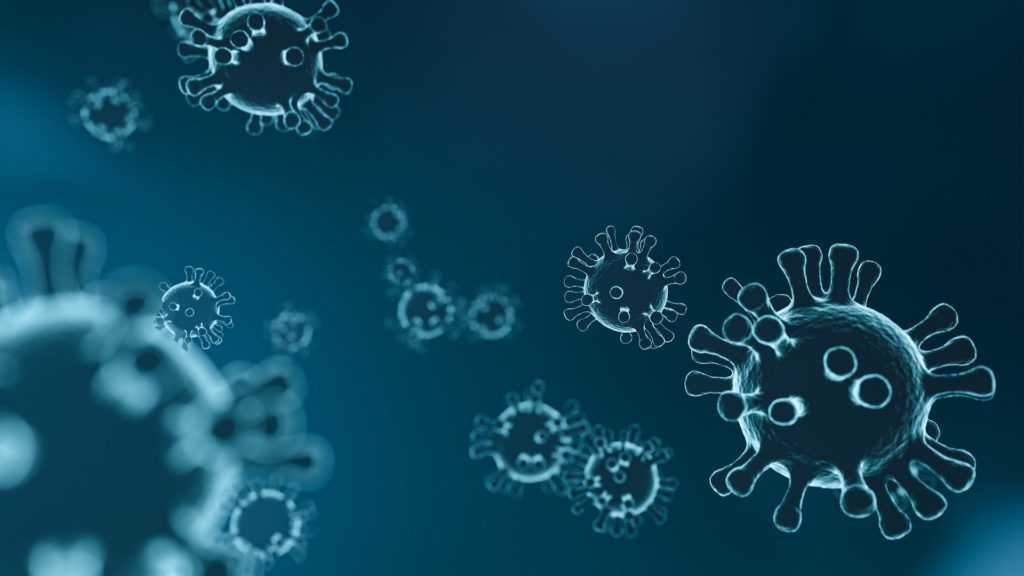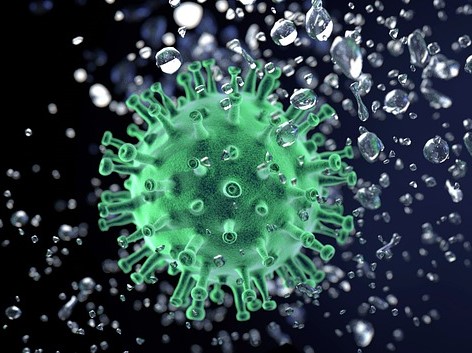Vaccine and Post-Infection Immunity
Immunity against SARS-CoV-2 is acquired in two ways, infection and vaccination. How do they differ? Which is “better”? In comparisons, consideration must be given to rates of infection, transmission, hospitalization, death, and long COVID as well as innate, humoral and cell-mediated immune responses. The only correlate of protection that is currently considered robust is the level of neutralizing antibodies, but this is clearly an incomplete picture. Also, the ever increasing number of variants and infections by them makes a very complex picture.
Before considering immune activation by vaccination and infection, we should ask what immune mechanisms might protect people who are unexposed to either modality. Many unexposed people have T cell activities against SARS-CoV-2, although their role in protection is unclear. These have been assumed to have originated from prior infections with seasonal coronaviruses, but a recent report indicated that they are actually cross-reactive with components of commensal bacteria, and not cross-reactive with seasonal coronaviruses. One wonders if the reverse may occur, in which COVID-19 elicits immune activities against commensal bacteria, perhaps disturbing the microbiome. There is also recent evidence for a protective innate-type immune response in exposed healthcare workers who have not seroconverted or been PCR-positive. These individuals frequently showed memory T cell responses to the viral RNA replication complex compared to infected individuals, in whom activity against structural proteins was more common. Moreover, those with the highest levels of this activity also showed elevation of IFI27, an early innate marker of SARS-CoV-2 infection, suggesting infection was abortive and that this may be a marker of a successful early sterilizing immune response.

Both the mRNA-based and adenoviral-vectored vaccines deliver modified spike protein coding regions but no other viral proteins, resulting in immune activity only against the viral spike protein of ancestral SARS-CoV-2 (at least in their original vaccine formulation). They effectively induce serum neutralizing antibodies, although these fade with time. They do not, however, appear to induce neutralizing antibodies in the respiratory tract, in contrast with people who have recovered from infection. This held true for anti-spike T-cell activity as well. Perhaps the intramuscular delivery of the mRNA vaccines restricts the tissue distribution of the immune response; the same study showed that intranasal boosting of vaccinated mice induced mucosal immunity.
The ever-increasing variety of variants is of course of great concern; it was this reality that led to the advent of the bivalent vaccines, which also include mRNA against omicron BA.5. How much of an advantage is the inclusion of the BA.5 component? A recent study showed little difference in neutralizing antibodies against BA.5 after boosting with bivalent vaccines as compared with the monovalent. It may be that this is due to immune imprinting during the original vaccination or infection, in which the boosted immune response recalls the response toward the original stimulus. This has sometimes been called original antigenic sin. Another recent study showed that vaccination elicits a lesser proportion of these mainly monospecific antibodies than does infection, as judged by their ability to bind to the spike proteins of seasonal coronaviruses, although the numbers analyzed were relatively small. They also showed that while the primary vaccination, like infection, induced antibodies to both the S1 and S2 proteins, vaccine boosters resulted in mostly S1 proteins.
What about vaccine-induced antiviral T cell activities? Although less likely to prevent initial infection, T cells are important in limiting viral spread. T cell epitopes seem more conserved among viral variants, and T cell activities tend to be more durable than neutralizing antibodies. Protection against severe

Covid in vaccinated individuals during omicron prevalence was substantial in the absence of high neutralizing antibody titers against omicron, strongly suggesting a protective role for T cells. The mRNA vaccines induce both CD4+ and CD8+ spike protein activities, as judged by IFNγ and IL-2 production in vitro in response to overlapping spike-derived peptides, with a bias towards the S2 chain of the spike protein. Interestingly, the magnitude of the T cell response was higher in mRNA vaccines than that of vaccines who received whole inactivated virus. T cells responses from vaccination are reportedly longer lived than either memory B cells or neutralizing antibodies and are much less sensitive to the mutations in variants, including omicron.
A present issue is what is the best approach to vaccine boosters. An interesting preclinical study used a lentiviral vector to deliver spike protein payloads. Mice were transduced with human ACE2 to render them permissive for SARS-CoV-2 infection, and prior to challenge were systemically vaccinated and boosted with the lentiviral vaccine or were vaccinated systemically and boosted intranasally. The intranasal boost, but not the systemic, elicited mucosal immune responses against the spike protein and resulted in much stronger protection against viral challenge, as judged both by a reduction in viral loads and by a reduction in inflammation. Besides antibody responses, a strong CD8+ T cell response was induced, as measured by IFNγ responses to pooled peptides. Generally similar results were obtained in the Golden hamster model. It will be interesting to see if this approach can translate to humans.
In another preclinical study, macaques were immunized with the Johnson and Johnson adenoviral based vaccine, Ad26.COV2.S, based on the spike protein of the original viral strain, and then challenged intranasally or intratracheally with delta. Both CD4+ and CD8+ antiviral activities were elicited, in addition to neutralizing antibodies. Notably, when CD8+ T cells were depleted in vaccinated animals, peak viral loads were greatly increased, indicating a protective role for CD8+ activities against heterologous strains.
The effect of variants is also in play with respect to immunity induced by infection. However, as mentioned above, infection seems to elicit a higher level of antibodies against previous infections, raising concerns that the same issues of neutralization escape by variants also pertain to convalescents. On the other hand, infection presents all the viral proteins, at least some of which elicit T cell activity. While this may not protect against infection, it could protect against severe disease, perhaps helping to explain why the new variants appear to be less severe. A caveat is that some of the viral non-structural proteins actively interfere with the host antiviral response and (https://doi.org/10.1016/j.isci.2022.105444), affecting the resulting immune response.
In addition to antibodies to the spike protein, infection elicits antibodies to the membrane and nucleocapsid proteins. The spike protein antibodies include neutralizing antibodies. A recent metareview analyzed antibody responses against omicron variants using convalescent plasma and pseudovirus assays. In most studies, fewer than 50% of the samples from people infected prior to the appearance of omicron had measurable neutralizing activity against omicron BA.1. However, samples from people infected during the same time period but also vaccinated consistently showed neutralizing activity against BA.1 for up to six months after whichever event was most recent, indicating a likely value of hybrid immunity. Similar findings were reported for protection against hospitalization; infected people were protected 81% against hospitalization following omicron infection, while people receiving two or three doses of vaccination were protected 94% and 97%, respectively. Another difference between vaccination and infection that could be of significance:
vaccines have low levels of neutralizing antibodies and anti-S T cell activity in the respiratory tract, even though high levels are present in the blood compared to convalescents.
In theory, T cell activities against viral proteins other than spike may provide a more complete T cell response to infection compared to vaccination. What is known about T cell immunity from infection? CD8 activity within 7 to 14 days correlates with viral clearance and mild disease. Both CD4 and CD8 activities target a wide variety of non-spike protein, and these correlate roughly with expression levels of the respective viral proteins. T cell activities against the spike, M and N proteins are particularly prominent. Although infection clearly differs from vaccination by resulting T cell activities against a wide variety of viral proteins, their roles in protection against infection/disease is not yet clear. Presumably, however, they would provide some measure of protection.
As can be seen, comparisons of vaccine- and infection-induced immunity are difficult at best. And this is without considering aspects of hybrid immunity-vaccination followed by infection or vice versa. Longer-lived protection against severe disease/hospitalization seems likely to be due to long lived T cell activity plus some residual neutralizing antibody titers. However, viral variation is clearly a problem, and this is perhaps exacerbated by immune imprinting from the original exposure. We need better vaccines.
References:
- 1. Bartolo, L., et al., SARS-CoV-2-specific T cells in unexposed adults display broad trafficking potential and cross-react with commensal antigens. Sci Immunol, 2022. 7(76): p. eabn3127.
- 2. Swadling, L., et al., Pre-existing polymerase-specific T cells expand in abortive seronegative SARS-CoV-2. Nature, 2022. 601(7891): p. 110-117.
- 3. Tang, J., et al., Respiratory mucosal immunity against SARS-CoV-2 after mRNA vaccination. Sci Immunol, 2022. 7(76): p. eadd4853.
- 4. Collier, A.-r.Y., et al., Immunogenicity of the BA.5 Bivalent mRNA Vaccine Boosters. bioRxiv, 2022: p. 2022.10.24.513619.
- 5. Anderson, E.M., et al., SARS-CoV-2 infections elicit higher levels of original antigenic sin antibodies compared with SARS-CoV-2 mRNA vaccinations. Cell Rep, 2022. 41(3): p. 111496.
- 6. Lim, J.M.E., et al., A comparative characterization of SARS-CoV-2-specific T cells induced by mRNA or inactive virus COVID-19 vaccines. Cell Rep Med, 2022: p. 100793.
- 7. Tarke, A., et al., SARS-CoV-2 vaccination induces immunological T cell memory able to cross-recognize variants from Alpha to Omicron. Cell, 2022. 185(5): p. 847-859 e11.
- 8. Ku, M.W., et al., Intranasal vaccination with a lentiviral vector protects against SARS-CoV-2 in preclinical animal models. Cell Host Microbe, 2021. 29(2): p. 236-249 e6.
- 9. Liu, J., et al., CD8 T cells contribute to vaccine protection against SARS-CoV-2 in macaques. Sci Immunol, 2022. 7(77): p. eabq7647.
- 10. Bouhaddou, M., et al., Global landscape of the host response to SARS-CoV-2 variants reveals viral evolutionary trajectories. bioRxiv, 2022: p. 2022.10.19.512927.
- 11. Amjadi, M.F., et al., Anti-membrane antibodies persist at least one year and discriminate between past COVID-19 infection and vaccination. J Infect Dis, 2022.
- 12. Sullivan, D.J., et al., Analysis of anti-SARS-CoV-2 Omicron-neutralizing antibody titers in different vaccinated and unvaccinated convalescent plasma sources. Nat Commun, 2022. 13(1): p. 6478.
- 13. Carazo, S., et al., Estimated Protection of Prior SARS-CoV-2 Infection Against Reinfection With the Omicron Variant Among Messenger RNA-Vaccinated and Nonvaccinated Individuals in Quebec, Canada. JAMA Netw Open, 2022. 5(10): p. e2236670.
- 14. Bergamaschi, L., et al., Longitudinal analysis reveals that delayed bystander CD8+ T cell activation and early immune pathology distinguish severe COVID-19 from mild disease. Immunity, 2021. 54(6): p. 1257-1275 e8.
- 15. Notarbartolo, S., et al., Integrated longitudinal immunophenotypic, transcriptional and repertoire analyses delineate immune responses in COVID-19 patients. Sci Immunol, 2021. 6(62).
- 16. Grifoni, A., et al., Targets of T Cell Responses to SARS-CoV-2 Coronavirus in Humans with COVID-19 Disease and Unexposed Individuals. Cell, 2020. 181(7): p. 1489-1501 e15.
- 17. Tarke, A., et al., Comprehensive analysis of T cell immunodominance and immunoprevalence of SARS-CoV-2 epitopes in COVID-19 cases. Cell Rep Med, 2021. 2(2): p. 100204.
